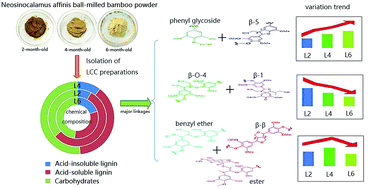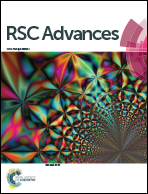Variations of lignin–lignin and lignin–carbohydrate linkages from young Neosinocalamus affinis bamboo culms
Abstract
Three lignin–carbohydrate complex (LCC) preparations were isolated to elucidate the variations of chemical linkages during growth in the early development stages of Neosinocalamus affinis bamboo culms. A combination of chemical composition analysis and FT-IR characterization indicated that the Neosinocalamus affinis bamboo contained lignin of typical G–S–H type, and glucuronoarabinoxylan hemicelluloses. The NMR technique was used for investigating the substructures of the LCC preparations, as well as quantifying the relative amounts of chemical linkages. The results revealed that changes of β-5′ and phenyl glycoside linkages were identical to the value of S/G ratio, and increased with the maturation of the bamboo. Whereas the amounts of β-O-4′ and β-1′ linkages presented a reductive tendency when the S/G ratio was increased. The relative amounts of β–β′, benzyl ether and benzyl ester linkages were in line with the content of carbohydrates, namely, they were increased firstly and then decreased with the development of the young bamboo culms. All of these findings will provide a theoretical basis for elucidation of the mechanism of plant cell growth, as well as the utilization of young Neosinocalamus affinis bamboo culms.


 Please wait while we load your content...
Please wait while we load your content...